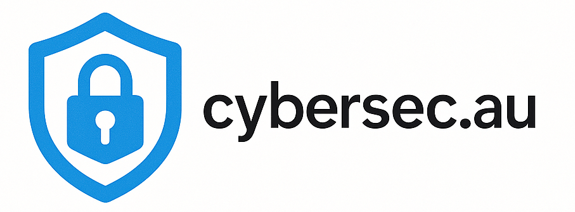Deepfake technology has evolved from a novelty to a serious cybersecurity threat. Australian businesses are increasingly targeted by sophisticated AI-generated audio and video impersonations designed to deceive employees and steal money or sensitive information. Understanding and defending against these attacks is now essential for business security.
🎭 Deepfake Threat Landscape
Voice Cloning
AI-generated voice calls impersonating executives or trusted contacts
Video Deepfakes
Fake video calls showing realistic impersonations of real people
Real-time Deepfakes
Live video manipulation during video conferences and calls
How Deepfake Attacks Work
Voice Cloning Attacks
Attackers create convincing voice replicas using AI:
- Voice sample collection: Gather audio from social media, company videos, or recordings
- AI training: Train voice cloning models on collected samples
- Script preparation: Prepare convincing scenarios and requests
- Attack execution: Make phone calls using cloned voice
- Social engineering: Combine voice cloning with personal information
Video Deepfake Attacks
Creating fake video content for deception:
- Video collection: Gather video footage from public sources
- Face mapping: Create detailed facial models
- Content generation: Generate fake video content
- Distribution: Share via email, messaging, or video calls
- Manipulation: Use fake videos to support fraudulent requests
Real-World Deepfake Attack Scenarios
CEO Fraud Evolution
Traditional CEO fraud enhanced with deepfake technology:
- Voice-based wire fraud: Fake CEO calls requesting urgent transfers
- Video conference deception: Fake video calls during remote meetings
- Emergency scenarios: Creating urgency to bypass normal procedures
- Vendor impersonation: Fake calls from trusted suppliers or partners
🚨 Real Attack Example
Target: Melbourne accounting firm
Method: Deepfake video call impersonating managing director
Request: Urgent $180,000 transfer for "confidential acquisition"
Detection: Employee verified through separate channel - director was overseas
Outcome: Attack prevented through verification protocols
Customer Service Exploitation
Deepfakes targeting customer service operations:
- Account takeover: Impersonate customers to gain account access
- Password resets: Use voice cloning for phone-based authentication
- Information gathering: Extract sensitive customer information
- Service manipulation: Change account details or payment methods
Detection and Prevention Strategies
Technical Detection Methods
Technology solutions for identifying deepfakes:
- Deepfake detection software: AI tools that identify artificial content
- Voice authentication: Biometric voice verification systems
- Video analysis tools: Software that detects video manipulation
- Real-time detection: Live analysis during video calls
Human Detection Techniques
Train employees to identify potential deepfakes:
- Audio quality issues: Unnatural speech patterns or audio artifacts
- Visual inconsistencies: Lighting, shadows, or facial movement anomalies
- Behavioral analysis: Unusual speech patterns or mannerisms
- Context awareness: Requests that don't match normal behavior
Verification Protocols for Australian Businesses
Multi-Channel Verification
Implement robust verification procedures:
Pause and Assess
Any unusual or urgent request should trigger verification
Use Known Channels
Contact the person using previously known phone numbers or email
Ask Personal Questions
Verify identity with information only the real person would know
Document Everything
Record verification attempts and decisions made
Code Word Systems
Establish verification phrases for high-risk scenarios:
- Financial transactions: Unique codes for payment authorizations
- Sensitive information: Verification phrases for data requests
- Emergency procedures: Special codes for urgent situations
- Regular rotation: Change verification codes periodically
Organizational Defenses
Policy Development
Create policies specifically addressing deepfake threats:
- Verification requirements: Mandatory verification for financial requests
- Communication protocols: Approved channels for sensitive communications
- Escalation procedures: When and how to escalate suspicious requests
- Incident reporting: Procedures for reporting suspected deepfake attacks
Employee Training
Comprehensive security awareness training covering deepfakes:
- Deepfake awareness: Understanding the technology and threats
- Detection techniques: How to identify potential deepfakes
- Verification procedures: Step-by-step verification protocols
- Incident response: What to do when deepfakes are suspected
Technology Controls
Implement technical controls to reduce deepfake risks:
- Call recording: Record important business calls for verification
- Video conferencing security: Use platforms with security features
- Email verification: Digital signatures and encryption
- Access controls: Multi-factor authentication for all systems
Industry-Specific Considerations
Financial Services
- Enhanced customer verification for account changes
- Voice biometrics for phone banking
- Video verification for high-value transactions
- Fraud detection systems with deepfake awareness
Healthcare
- Patient identity verification for telehealth
- Medical record access verification
- Prescription authorization protocols
- Emergency access procedures
Legal Services
- Client identity verification for sensitive matters
- Document authentication procedures
- Court proceeding security
- Confidential communication protection
Future of Deepfake Threats
Emerging Trends
- Real-time generation: Live deepfakes during video calls
- Lower barriers: Easier creation with less technical skill
- Higher quality: More convincing and harder to detect
- Automated attacks: AI-powered social engineering at scale
Defense Evolution
- Detection improvements: Better AI-powered detection tools
- Blockchain verification: Cryptographic proof of authenticity
- Biometric advances: More sophisticated identity verification
- Legal frameworks: Regulations addressing deepfake misuse
Working with Cybersecurity Partners
Defending against deepfake attacks requires expertise in both technology and human psychology. Leading cybersecurity providers like Affinity MSP offer deepfake defense services including:
- Deepfake awareness training and simulation exercises
- Verification protocol development and implementation
- Technology solutions for deepfake detection
- Incident response for deepfake-related fraud
- Policy development and organizational controls
Protect Against AI-Powered Deception
Deepfake attacks represent a new frontier in cybersecurity threats. Get expert guidance on protecting your business from AI-powered impersonation and fraud.
Get Deepfake Protection Assessment